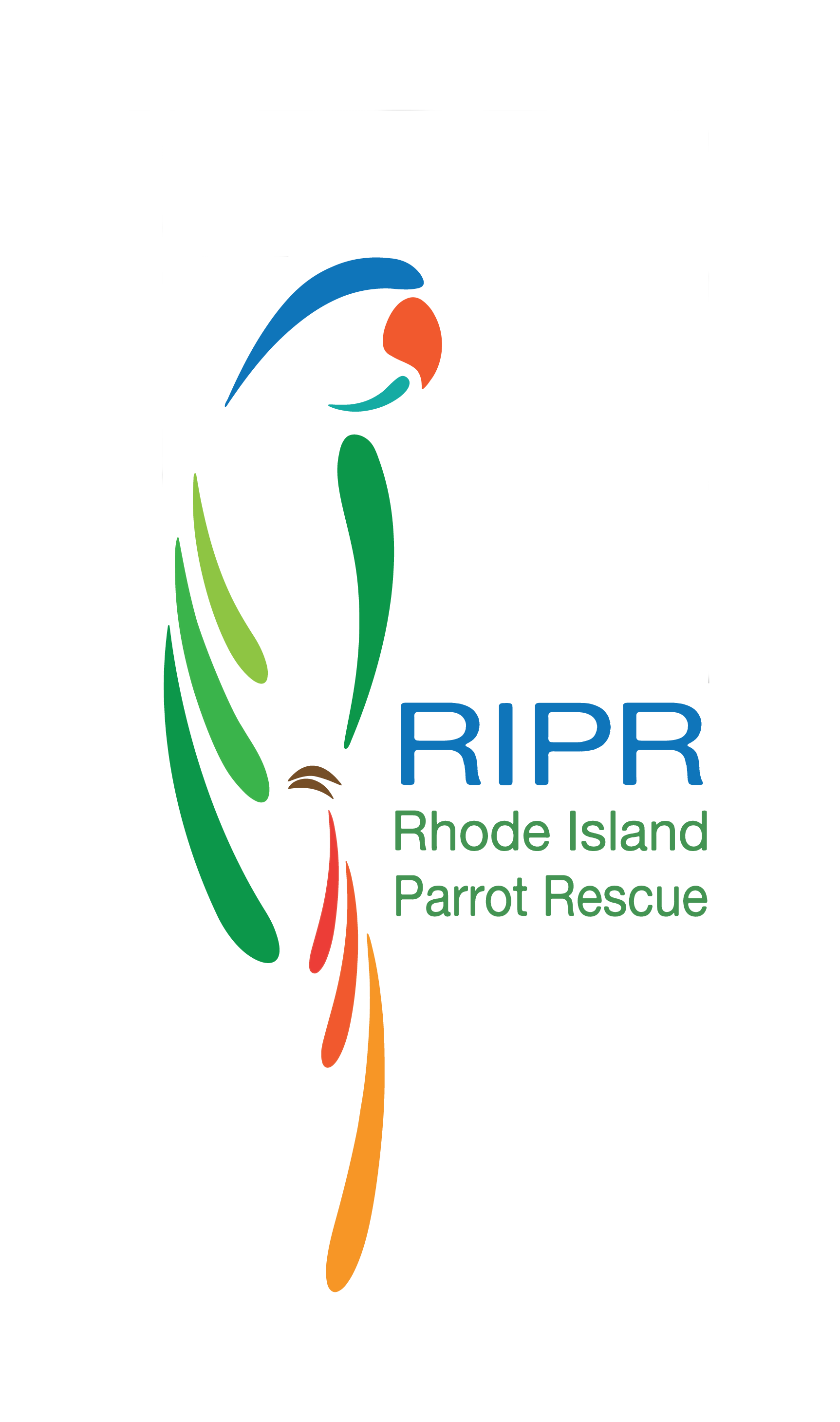All About Molting
By Rosemarie Diaz, Rhode Island Parrot Rescue Staff
Have you ever noticed your bird shedding feathers? This phenomenon is known as molting, a natural process essential for maintaining your parrot's plumage health.
What is Molting?
Molting is the cyclic process during which birds shed old or damaged feathers and grow new ones to replace them. This renewal of feathers is important for maintaining proper flight, insulation, and overall health.
What to Look Out For
One fascinating aspect of molting is the symmetrical shedding and regrowth of feathers. It's not uncommon for parrots to lose and replace feathers in pairs or symmetrically across their body. This symmetrical pattern is a natural occurrence and often reflects the balanced development of their plumage.
When Does Molting Happen?
Molting typically occurs in regular cycles throughout a parrot's life, all depending on factors like species, age, health, and environmental conditions. Most parrots experience a major molt once or twice a year, during which they shed and replace a significant portion of their feathers. They may also have minor molts, replacing individual feathers as needed throughout the year.
Understanding Pin Feathers and Blood Feathers
During molting, you may notice small, thin structures emerging from your parrot's skin. These are called pin feathers, also known as blood feathers during their early stages of development. Pin feathers are encased in a protective sheath filled with blood vessels that nourish the growing feather. It's important to handle your parrot with extra care during this time, as any damage to a blood feather can result in bleeding.
How to Help with Your Parrot's Comfort During Molting
Supporting your parrot during the molting process can enhance their comfort. Here are some tips to consider:
1. Gentle Handling: Be mindful of your parrot's sensitivity during molting and avoid excessive handling or touching of their new feathers, which may still be growing and tender.
2. Offer Bathing Opportunities: Encourage natural preening and feather care by providing your parrot with access to bathing opportunities, such as shallow dishes of water or misting sessions.
Copyrighted. Blog posts may be used as guidelines for the proper care of your parrot. Not intended for medical or legal advice. Please consult with a licensed avian veterinarian regarding the medical care and wellbeing of your exotic pets.
